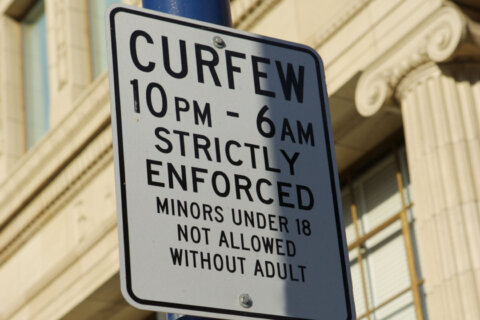The last group of Prince George’s County, Maryland, public school students to receive instruction virtually is now back in the classroom.
Students from kindergarten to sixth grade attended school virtually as part of the school system’s strategy to try to slow the spread of the coronavirus.
In December, Prince George’s County Public Schools CEO Dr. Monica Goldson said that students in grades 7-12 would have virtual instruction until Jan. 18, and those from kindergarten to sixth grade would return on Jan. 31.
Goldson said the extended period for the younger students was designed so that the school system could provide opportunities for as many children as possible between the ages of 5 to 11 to be vaccinated.
“We partnered with our local health departments to offer several vaccination clinics” in order to make it convenient for parents to get their children vaccinated, Goldson said.
But a number parents with children in K-6 said they wanted their children to continue to attend school virtually. An online petition from Prince George’s County schools parent Danielle Wood called for keeping children in the virtual mode until the end of the school year. By Monday, there were 1,628 signatures on the petition. Last week, there was also a protest outside the school system’s Board of Education offices in Upper Marlboro over the return to in-person learning.
In an interview with WTOP, Goldson said the virtual instruction for the younger students was always designed to be a temporary option.
“While I fully understand parents feeling like their child’s in a routine and comfortable,” Goldson said the school system had been very clear that the return to in-person learning was a priority.
Goldson said that the Maryland State Department of Education allows school systems some flexibility to make decisions, but “their goal is to aggressively work to bring students back to in-person normal attendance, and “we are honoring exactly what we submitted to the state that we would do.”
Details on proposed FY 2023 budget
Goldson recently offered details on her proposed FY 2023 budget to the Prince George’s County Council.
She told them she’s working with state lawmakers to include roughly $26 million for county schools under the Education Effort Adjustment, part of the state’s Blueprint for Maryland’s Future, a state education funding formula. The provision is tied to student enrollment figures.
Goldson said student enrollment in Prince George’s County schools is projected at 130,000 this year compared to 135,000 last year at the same time.
Other priorities in the budget include $229.2 million to provide access to technology for students, $131.8 million for added personnel, $140.4 million to enhance student mental health resources, $5 million to reduce class size, and $2.5 million to redesign the alternative programs at the high school level.
Redesigning alternative education
Goldson’s approach to what she calls the “redesign” of alternative education has gotten pushback from both students and staff at two facilities: Tall Oaks Vocational High School in Bowie and the Community Based Classroom in Bladensburg.
Staff and students at those two schools recently testified before the Prince George’s County Board of Education, urging the board to oppose the plans.
Goldson said she wants to be clear: Staff members at the county’s five alternative schools will not be losing their jobs. “We still will have a 9-12 program in the southern and the northern part of the county, so we still need those teachers” for the alternative programs, Goldson said.
Goldson insists that the current wraparound services that students get at schools, such as the Community Based Classroom and Tall Oaks, will still be available when the schools are shifted into alternative programs at their new locations.
Currently, the county’s five alternative schools each have a 1-star rating from the Maryland State Department of Education, Goldson said. Converting the alternative schools into programs “removes that star rating and the possibility of the state ever looking at those schools for a future reorganization,” she said.
The consolidation also saves $2.5 million in the school system’s budget, Goldson said.








